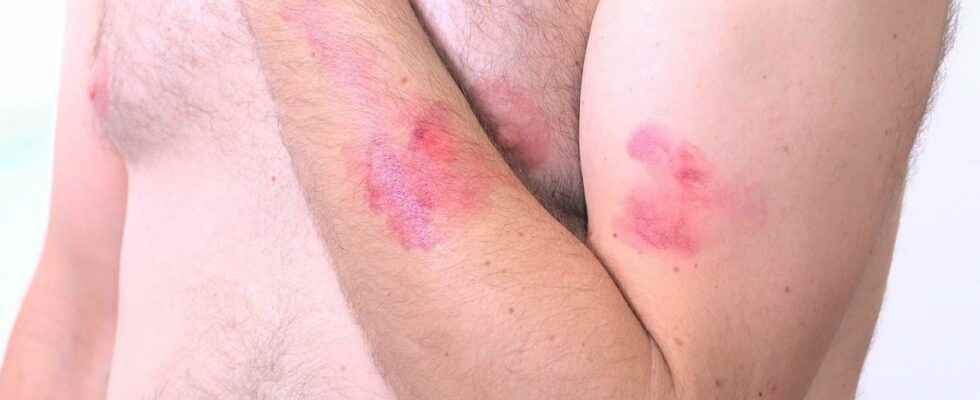Monkeypox continues to spread across the world and the World Health Organization is working to track the extent of the outbreak and understand its causes. Belgium, which has just confirmed a second case of “monkeypox” on its territory, has just announced a 21-day quarantine for anyone infected with the virus.
The numbers continue to grow. There are now around 80 confirmed cases of monkeypox worldwide, with almost as many to be confirmed in at least eleven countries. The World Health Organization (WHO) continues its close monitoring of the epidemic and encourages the population to obtain information from reliable sources. Here are the answers to ten questions you are probably asking yourself.
What is monkey pox?
Monkeypox is a viral zoonosis, that is to say a viral disease capable of being transmitted from animals to humans and now from humans to humans since the virus seems to have changed recently by acquiring the ability to be transmitted between humans.
Where do we find it?
The first case of this epidemic was identified in the United Kingdom on May 6, 2022, in a man who returned from Nigeria. It is in the countries with humid and tropical zones of West and Central Africa that the virus is often found, because of the favorable conditions for its reproduction in the animals which transmit it (most often rodents).
Since then, the number of cases has increased in England and monkey pox has also been found in Spain, Portugal, the United States, Belgium, France… In total, 11 countries are concerned, at least, according to the WHO.
What are the symptoms ?
The monkeypox gives a flu-like state, with the following symptoms: fever, headache, body aches, fatigue, numerous and swollen lymph nodes… After a few days of fever, the skin lesions appear, which fill with a clear liquid and end by drying and then falling off, which can leave scars on the skin.
The rash, which can reach up to a thousand pimples, tends to be concentrated on the face, the palms of the hands and the soles of the feet. Pimples can also be located on the mouth, genitals and eyes.
Can we die from it?
Monkeypox is a viral disease that is cured in the majority of cases. For the scientific manager of the Jane Goodall Institute, Dr. Bruno Pelletier, mortality is estimated at less than 10% of cases. It is when the pathology leads to complications that this can occur, in people who are weak on the immune level.
Rodents and primates are the main carriers of monkeypox. In endemic countries, contact with infected animals, whether through skin, blood or meat, allows the disease to be transmitted to humans.
How does human-to-human transmission take place?
Close contact with an infected person is necessary. When a person is sick, they remain infectious for an average of two to four weeks.
Be wary of postilions, saliva, all bodily fluids in general and the air exhaled by an affected person, as is often the case in viral pathologies. For this pox virus in particular, the lesions, dried or not, can also be contaminating.
Who is at risk of getting monkeypox?
Those most at risk are those in close contact with people infected with the virus. This concerns the entourage of a patient, but also health professionals. Newborns, children and immunocompromised people are at greater risk of complications and death due to weak or immature immune systems.
Is there a treatment?
Monkeypox resolves spontaneously without treatment after 21 days, on average. Mouthwashes and eye drops can be used as long as products containing cortisone are avoided. In severe cases, anti-vaccine immunoglobulin may be recommended.
In addition, the Food and Drug Administration (FDA), the American health authority, has just authorized a treatment against monkeypox. It is more precisely a molecule which already exists to treat smallpox, called tecovirimat, whose trade name is TPOXX which is taken in oral form. This treatment has therefore just received the regulatory green light for an intravenous formulation, against monkeypox.
Is monkeypox a sexually transmitted infection?
There is nothing to confirm this for the moment, even if the track of sexual transmission has been mentioned by British scientists from the first confirmed cases in the country. Indeed, of the first seven cases, four men said “be homosexual, bisexual or have sex with men”.
But the risk of being infected with monkeypox is not limited to sexually active people or men who have sex with men. “Anyone who has close physical contact with an infectious person is at risk, as direct skin-to-skin contact with lesions can spread the virus.” points out the WHO.
What should I do if I think I have been infected?
If you think you have symptoms or have been in close contact with someone with monkeypox, contact your doctor for advice and to be reliably diagnosed with a test. In the meantime, self-isolate and avoid close contact with other people.
In terms of hygiene, wash your hands regularly, wear clothes over your lesions so as not to contaminate the caregivers who will examine you and wear a mask. Finally, remember to ask those around you to protect themselves when handling objects that could be contaminated by you: towels, dishes, sheets… They must all be carefully disinfected, just like contaminated surfaces.
